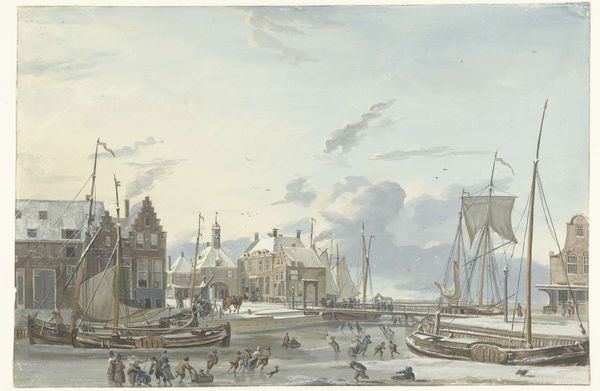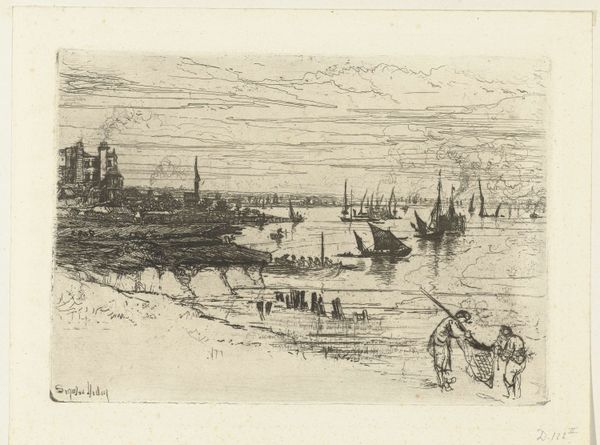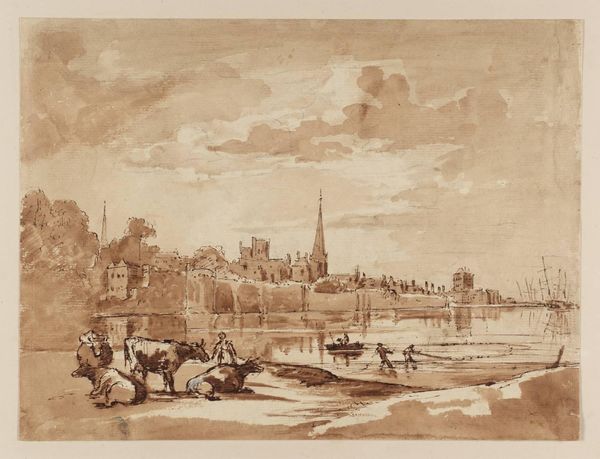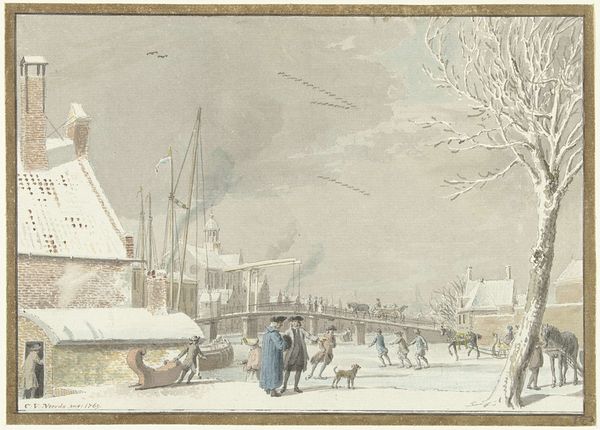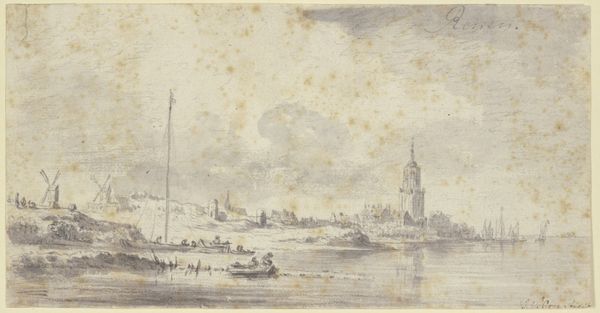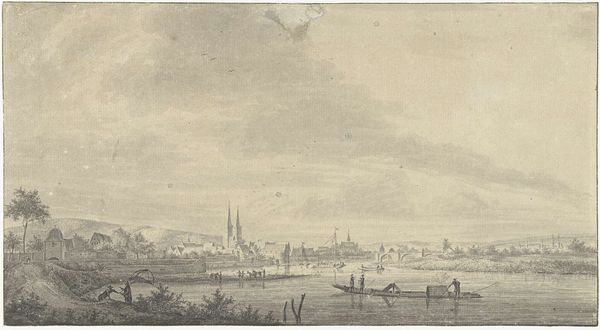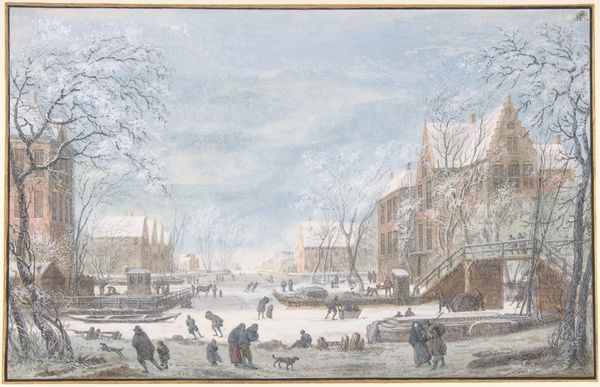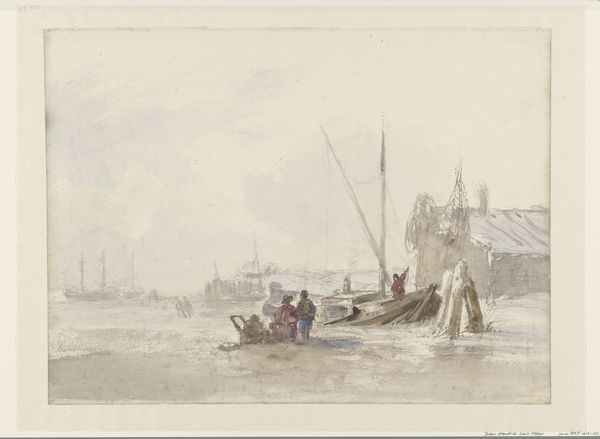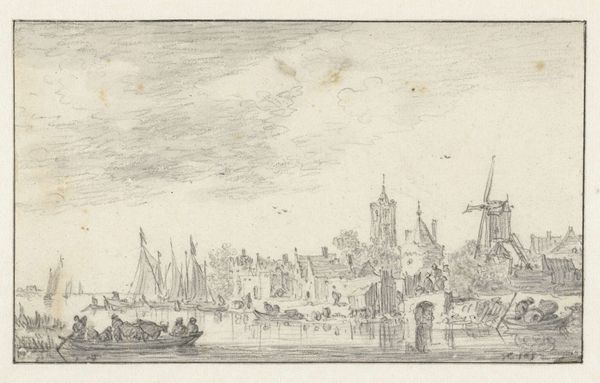
painting, watercolor
#
painting
#
landscape
#
watercolor
#
romanticism
#
cityscape
#
watercolor
Dimensions: height 126 mm, width 138 mm
Copyright: Rijks Museum: Open Domain
Curator: Gerrit Lamberts created "Wintergezicht te Amsterdam," sometime between 1786 and 1850. It’s a watercolor on paper, and currently held in the collection of the Rijksmuseum. Editor: It feels…brisk. Looking at this wintry scene, I can almost feel the icy wind on my cheeks. Everything is rendered in these delicate grays and blues, conveying the somber mood of a frozen city. Curator: Indeed. It’s tempting to see it through a romantic lens, placing emphasis on the sublime loneliness evoked by the stark landscape. But the figures, rendered with their mundane labor and play, are worth our consideration, too. Editor: Absolutely. There's a quiet resilience visible, wouldn't you say? Like, even when the canals freeze over and everything’s gray, life persists, work must continue, and even joy finds a way through sledding and skating. Curator: Precisely! The artist positions human actions, labor, and leisure against this broader backdrop of the city's growth. Think about the era it was created—urban development was changing Amsterdam, creating different social and economic pressures, and Lamberts seems attuned to these tensions. The people become vital markers, showing not only the city’s beauty, but the realities of daily existence in 18th century Amsterdam. Editor: It’s like the artist has frozen a moment in time, letting us glimpse into the daily life of a past Amsterdam winter. It's far from idealized, but it is imbued with an undeniable dignity. And that muted palette—it somehow amplifies the stillness and the intimacy of that moment. Curator: And that intimacy can prompt critical reflection on who has the privilege to stop and observe or to seek pleasure, who does the work to enable such moments, and how these interactions might play out differently across diverse social identities and power dynamics. Editor: Looking at the buildings, the ships, the little figures – I feel a surprising tenderness for this not-so-distant world. It is nice when an artwork transports us not just through place, but to a richer, more textured perspective. Curator: For me, this artwork underlines the importance of looking beyond aesthetic beauty, challenging us to ask probing questions about history, about societal norms, and about ourselves, within an intersectional historical framework.
Comments
No comments
Be the first to comment and join the conversation on the ultimate creative platform.
